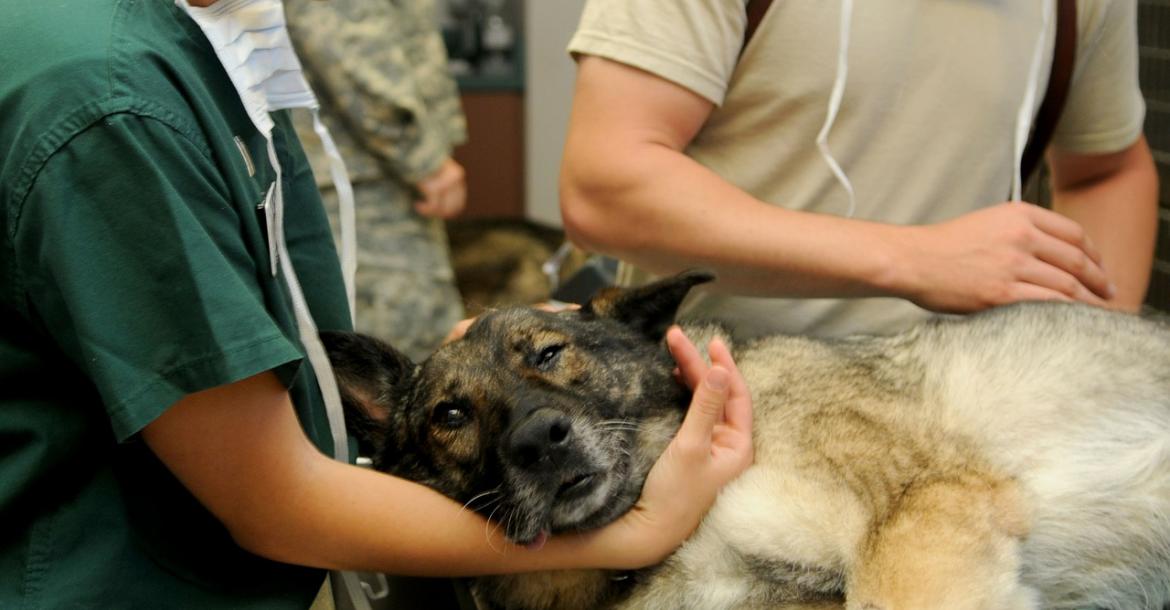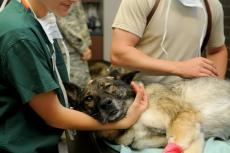Brucellosis, the facts and the risks
It sounds dramatic, and it is. The NVWA has found the Brucellosis Canis bacteria in dogs in the Netherlands "for the first time" (as some newspapers put in their headline).
Please note, this is the first time that dogs were born in the Netherlands (because in 2016 the NVWA already reported that dogs, imported from the Easteuropean countries), were found to be infected with the bacteria. Although it is now stated on the site of the inspection service that it was early 2017.
And also now it seems that the Brucellosis bacterium has come with a dog that has been imported from Russia, and has subsequently infected other dogs living with the breeder in the Netherlands. After serum testing, it was determined which animals were infected. All these animals have since been euthanized due to the contamination risks. The infection took place at a commercial breeder, but a little one, not a large puppymill. The newsletter sent to vets today shows that it was about purebred dogs:
“At the beginning of this year, B. canis was found in several dogs in a dog farm in the Netherlands. There were, among other things, imported purebred dogs from Russia where the bacterium was found. The NVWA has examined all dogs present at the breeding farm. It was shown that the infection was able to spread between different groups, races and genders. A few offspring that were still present in breeding were also found to be HIV positive. All seropositive animals were euthanized, after advice from experts and NVWA and in consultation with the keeper, to prevent further spread.
In recent years puppies were born and sold in this breeding farm. It is possible that some of these animals are also infected. The owners of these puppies will, as far as traceable, be informed by the NVWA with the main purpose of informing these owners about a possible infection of the dog and discouraging them from breeding. They will be advised to contact their own veterinarian.”
Brucellosis is a serious disease. Dogzine already published that at the beginning of 2017. Moreover, it is a zoonosis, so it is possible to jump from dog to human. However, that is rare, and only a few cases have been known in 50 years where such contamination has occurred.
Although the EU countries monitor Brucellosis, and the Netherlands would have been free from this disease since 1999 (Belgium since 2003), that concerns another variant, the bovine variant (Brucellosis has at least four variants, including B. Canis, which causes the disease). But for this dog breed there is not even a reporting obligation in the EU. However, the EU decided to carry out a large-scale investigation into the incidence of the bacterium in dogs in the middle of last year, in order to make standardization of the diagnosis possible and to make recommendations to the member states. (The research protocol is online, but only accessible to members).
Brucellosis can also be a problem for people. Brucellosis is, as said, a zoonosis and the transfer from human to animal and vice versa is possible. But the chance that B. Canis will be transferred is minimal and has never been established in the Netherlands. Yet it does occur in people, but so it concerns other types. The studies that have been conducted speak of the types that we see in farm animals.
B. Canis is not new. The first investigation into this took place half a century ago, prompting a beagle breeder who talked about sterile males and aborting bitches. The bacterium invades through mucous membranes, finds its way into the lymphatic vessels and travels through the body. He nestles in cells of the immune system itself and searches for lymph nodes, liver, spleen and bone marrow. The bacterium spreads from those base bases and causes infections. Studies indicate that the womb also appears to be a preferred site as a reservoir for the bacterium, with all its consequences for the reproduction of the host.
That so much research is being done is because the Brucellosis bacterium is difficult to control. The few antibiotics that can handle the disease are expensive and the treatment is difficult and not always successful. The Brucellosis species are a major problem for farm animals because sterility and spontaneous abortion are the result. And that of course gives rise to problems from an economic point of view.
There are several species of this bacterium that behave species-specific. Strangely enough, not all types of Brucellosis are equally pathogenic (disease-causing), the B. Canis appears to be the least pathogenic. Yet the B. Canis is the one that was recently found. And that causes slight panic among dog breeders, because where does it come from and how should you deal with it?
Already in 2017, Wageningen Biodiversity research asked for for more government control as a result of the 2017-case. Although this question was mainly due to the contamination risks to people, it was nevertheless very legitimate. Not all countries have Brucellosis-free status and more and more dogs from those countries also come to the Netherlands. That can be neatly vaccinated purebred dogs that meet all the rules and it can also be illegal imports; It is not known to date which dogs had the infections and therefore could have been able to transmit them.
For some time there has been a demand for greater awareness of risks. In February of this year, for example, a member of the KNMvD insisted on a reluctance to adopt stray animals from abroad, with rabies and Brucellosis being mentioned as risk factors for humans and animals. "Because adopting former stray animals does not solve anything structurally, veterinarians, animal protection, dog protection and the government do not recommend adopting stray animals from abroad", the veterinarian from the article says. Incidentally, the NVWA itself also advises: "Given the risks that can still arise for humans and animals, it is advisable to opt for assistance in the country itself if one wants to help animals". Yet, the rules simply allow the import of dogs without too many health tests.
The question is therefore whether the government will take measures and, if so, which ones. The man who insisted on measures as the WUR spokesperson in 2017 was Hendrik-Jan Roest, and he recently made a carrier switch and started to be precise with the same government, the Ministry of LNV. The right man in the right place, therefore, since his position there is deputy Chief Veterinary Officer / MT member Veterinary Market Access.
Dogzine has submitted questions to the Ministry. To be continued.






